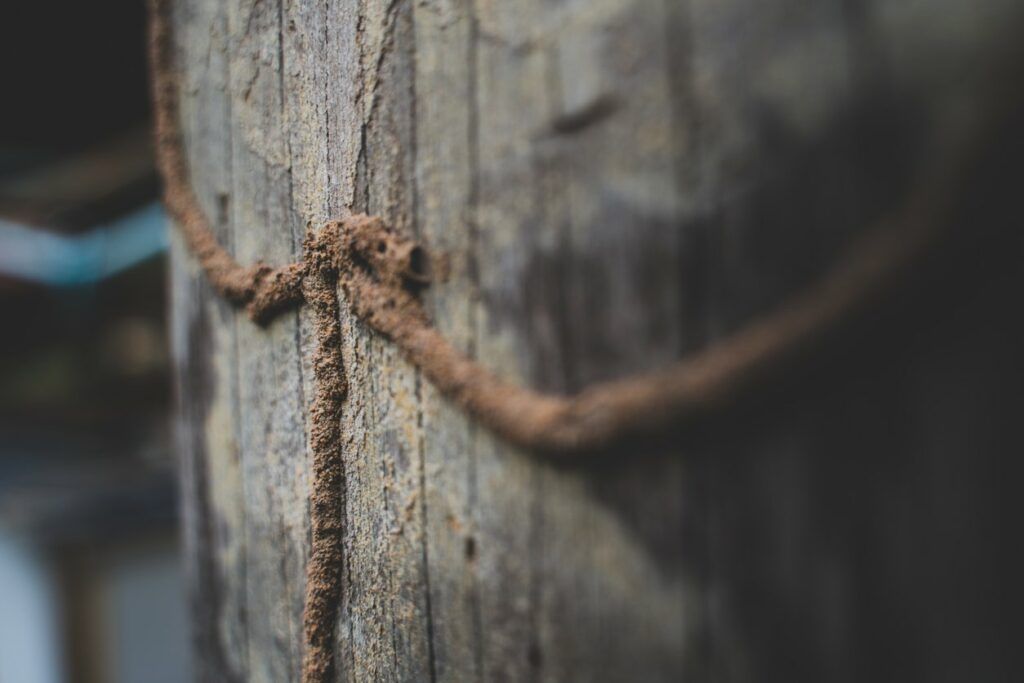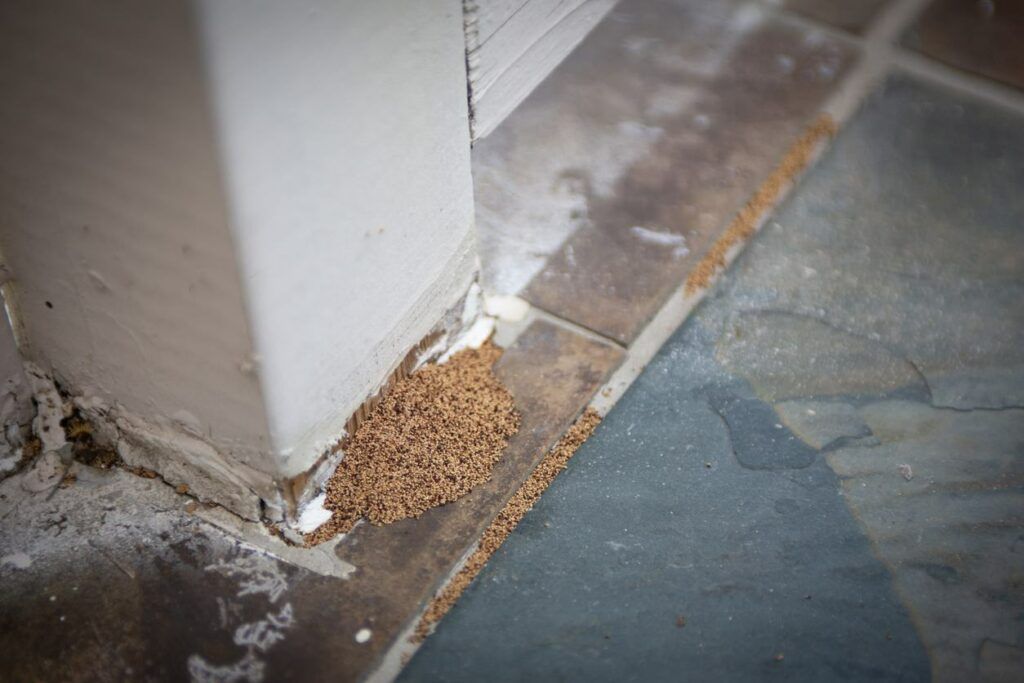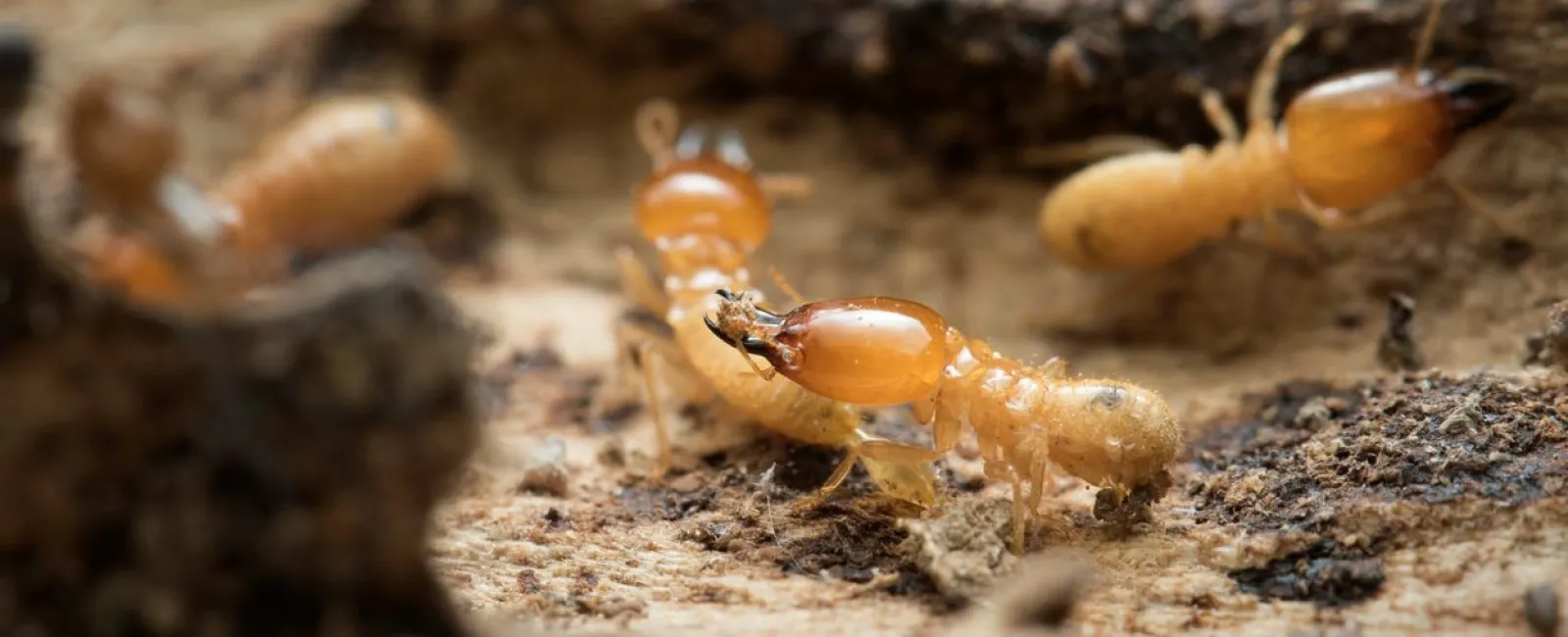Termites are one of the most dreaded pests for homeowners and businesses alike. Anyone with wooden structures can be at risk for a termite infestation—they don't discriminate.
However, like most pests, termites are attracted to certain conditions, including moisture and an untreated structure. By treating your home or business with termite prevention, you significantly reduce the chances of a colony ever establishing itself in the first place.
Unfortunately, once termites have found their way inside your home, those crawling creeps are hard to spot until the damage has already been done. However, knowing what to look for can help you catch the issue before it becomes exponentially worse. Keep reading for tips from the service pros at Greenix to help you identify these damaging pests before they get out of control.
What Are Termites?
Termites are small insects that are primarily blind. They live in colonies that can consist of several hundred thousand individuals. Not known to be a severe health hazard to humans, termites themselves rarely bite, but they do leave behind residue from saliva and droppings that can irritate the lungs and skin. The biggest threat termites bring, however, is the structural damage they cause.
Termites are among the most destructive pests in the world, causing an estimated $5 billion in damage in control and repair costs every year. These sneaky pests are infamous for eating the wood of your structure, but they also feed on plants, carpet, insulation, cardboard, fabric, clothing, and more.
Termites eat wood because they seek cellulose, a substance that makes up a large portion of plant cell walls. Cellulose is also in many manufactured goods, including paper, plastic, and fabric products. However, cellulose is plentiful in wood, and the surrounding material also provides shelter and nesting space for the termites as they eat. Furthermore, very few other creatures will eat wood, so resource competition is low.
Termite Identification

ermites will sometimes make appearances when they swarm, typically during the spring and summer months. If you see a pest in your home that you think may be a termite, look for a thick waist, straight antennae, and six short legs. Swarming termites will have two pairs of wings that are of the same length. Termites can often be confused for ants, as they do look quite similar.
You likely won't see termites without finding any signs of termite damage. Therefore, we suggest taking a good look at your home after you learn how to identify termite damage.
How To Identify Termite Damage
Termite damage often goes unnoticed until the damage is significant. Knowing the signs of a termite infestation, however, can be essential to catching the pests before they cause any further problems for your structure and your wallet.
Discolored, droopy drywall, peeling paint, or a suddenly saggy or squeaky floorboard can all be signs of termites. You might notice a window or door doesn't shut like it used to. Termite damage will sometimes appear similar to water damage. A key difference can be heard by knocking on the area. If it sounds hollow where it shouldn't, that could mean the wood inside has been eaten away.
Also, keep on the lookout for mud tubes, a sure sign of subterranean termites. These small, brown, pencil-sized tubes are how subterranean termites travel safely and can serve different purposes for the termites. Additionally, swarming termites will discard their wings, which can then be found afterward. Swarming is a sign of a mature colony. Frass, on the other hand, can be created by newer colonies.
"Frass" is the term for termite droppings that the termites push out of their nests through small holes in your wall. The frass will therefore collect under that hole and will be oval-shaped and might resemble the appearance of sand or sawdust. The color will depend on the type of wood that has been consumed but will likely be some shade of light or dark brown.
Can I Get Rid of Termites Myself?

Termite extermination and removal is not a task you should undertake yourself. Not only are the areas tricky to reach and can require a trained eye to find, but the DIY solutions can cost more money and take more time than they're worth.
However, termite prevention is something you can do on your own with simple tricks, such as reducing any contact wood has with the ground and preventing the collection of moisture. Once termites are in your structure, complete termite control is incredibly difficult to do without the proper training, knowledge, and experience that the Greenix Pest Control experts have.
When done by a professional, termite control is safe and effective and should have little to no effect on you or your family.
Greenix Termite Control Services Near You
The pest control experts at Greenix are well versed in all things termite control. Our team will place bait stations near the areas your termites are targeting. Then we'll return regularly in the future to inspect for any additional damage and make adjustments or add additional products as needed.
We have many service areas throughout the United States, so locate your nearest Greenix Pest Control team and give them a call to have someone at your door within 48 hours.
Ohio Termite Control Now Available With Greenix
This just in: Your home in Ohio can officially be termite-free! Termite control in Ohio is now being offered by our team. From Columbus to Cleveland, from Toledo to Cincinnati, termites will have to find somewhere else to have dinner when the Greenix Pest Control experts step onto the scene.
If you have termites in Ohio, contact Greenix Pest Control right away to get any potential threats under control so you can enjoy a pest-free home today!

